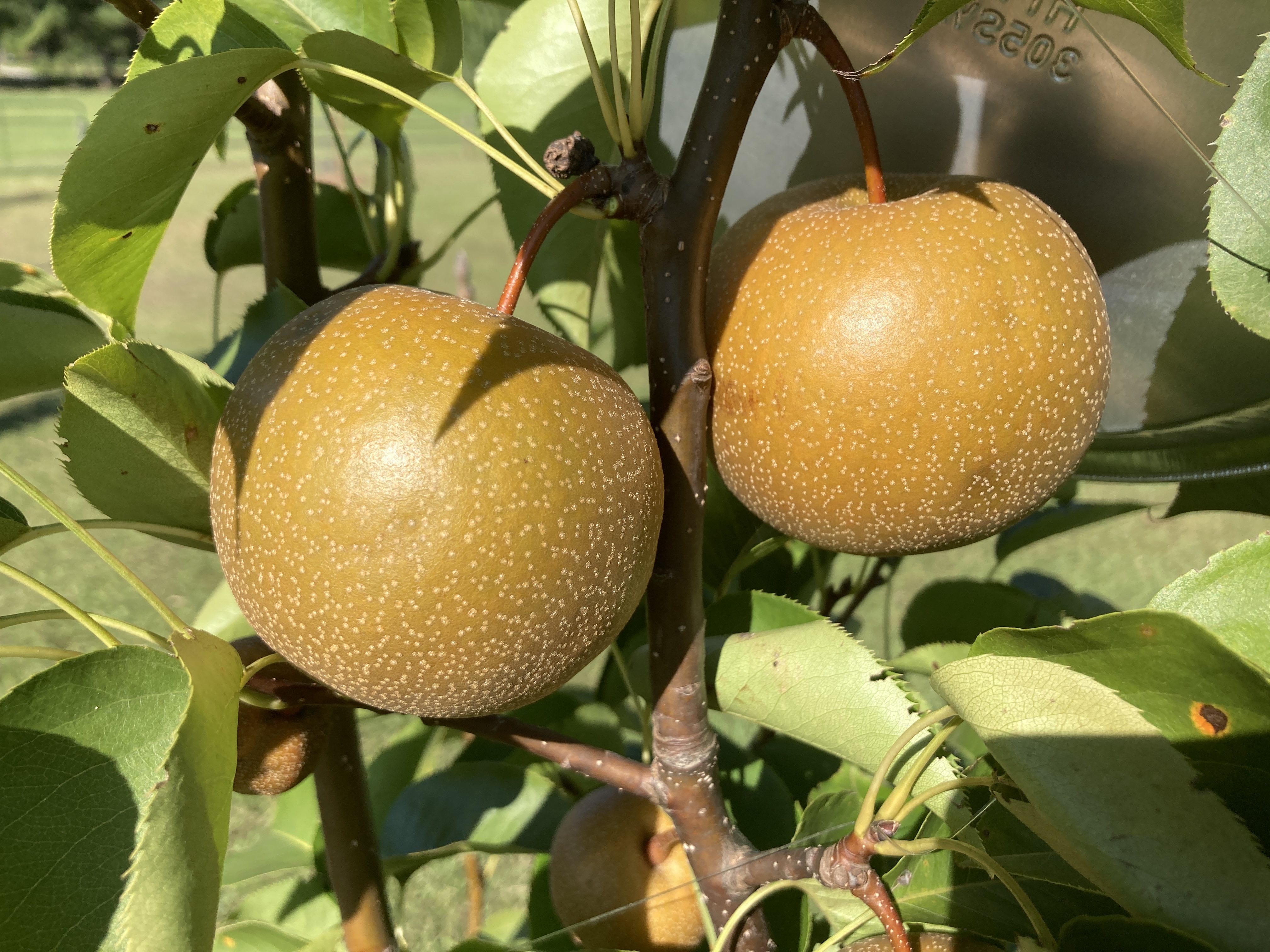Resource Library
Plant of the Week: Pyrus pyrifolia; “Korean Giant” Asian Pear
With the new interest in growing one’s own food, the idea of producing fruit has huge appeal. Unfortunately, this is easier said than done. Apples and peaches would be at the top of most our lists, but unfortunately producing a successful crop without paying close attention to controlling pest problems is difficult. Pears, however, are another matter. Asian pears (selections and hybrids of Pyrus pyrifolia) are worth considering for the home garden.
Pears belong to the rose family and are closely related to apples. About 25 species have been described with all native to Europe, Northern Africa and Asia. The Asian pear is a medium sized deciduous tree growing 25 to 35 feet tall and wide with a more rounded crown than the more common upright growing European pear.
Five-petaled white flowers are produced in mass in early spring – about two weeks earlier than European clones – on spurs in clusters of five or so. Asian pear flowers are low chill requiring, with about 400 hours of chill needed compared to the 600 or more needed for the European clones. Because of the low chill requirement, they are well suited for warmer regions of the United States, but likewise are not as suitable for the colder reaches where the European pear does better.
A dozen or more Asian pears are commonly offered in the nursery trade. Typically, they are late season ripening with the fruit apple shaped and about that same size. The fruit color is yellow or russet colored brown with the flesh white and crisp. They retain the juiciness of pears but pear officiants disagree whether they prefer the taste of the Asian or European selections.
Asian pears made it into the eastern United States in the 1820s when Chinese-American trade first began. The pace of importation picked up again with the California gold rush and when immigrants were brought in to work on the transpacific railroad. This period also marks what U. P. Hedrick calls in his 1950 book A History of Horticulture in America to 1860 the beginning of a pear craze amongst the landed gentry of the Northeastern states. Enterprising nurserymen, often grafting their pears on quince rootstock to produce dwarfed, earlier bearing trees they could sell for a higher price, offered from 500 to 1000 clones in their price lists. By 1870 the fervor was beginning to die down. By century end only few old pear clones such as the 1760s vintage “Bartlett” and the hybrid “Kieffer” (an 1870s cross between the Asian pear and “Bartlett”) began to dominate commercial pear orchards.
Two classes of Asian pear clones are offered according to their skin texture; the smooth yellow or green skinned clones and the rough textured russet colored clones. Of the two, the russet clones are most common and most likely to have fire blight resistance. This disease that can ravish pear trees unless they possess innate resistance. Pears need to be cross pollinated to produce fruit, so two Asian clones should be planted in the garden.
Asian pears are grown commercially in West Coast orchards and from zones 6 through 9 in the rest of the country. They make good additions to the home garden where they can be used as stand-alone trees in the front lawn or trained to a trellis as an espalier. Trees are often grafted on rootstocks to help reduce overall size. This is especially important if the trees to be trained for use as an espalier subject.
For more information about horticulture or to see other Plant of the Week columns, visit Extension’s Website, www.uaex.uada.edu, or contact your county extension agent. The Cooperative Extension Service is part of the U of A Division of Agriculture.
